Juan Lyu
HMPNet: A Feature Aggregation Architecture for Maritime Object Detection from a Shipborne Perspective
May 13, 2025Abstract:In the realm of intelligent maritime navigation, object detection from a shipborne perspective is paramount. Despite the criticality, the paucity of maritime-specific data impedes the deployment of sophisticated visual perception techniques, akin to those utilized in autonomous vehicular systems, within the maritime context. To bridge this gap, we introduce Navigation12, a novel dataset annotated for 12 object categories under diverse maritime environments and weather conditions. Based upon this dataset, we propose HMPNet, a lightweight architecture tailored for shipborne object detection. HMPNet incorporates a hierarchical dynamic modulation backbone to bolster feature aggregation and expression, complemented by a matrix cascading poly-scale neck and a polymerization weight sharing detector, facilitating efficient multi-scale feature aggregation. Empirical evaluations indicate that HMPNet surpasses current state-of-the-art methods in terms of both accuracy and computational efficiency, realizing a 3.3% improvement in mean Average Precision over YOLOv11n, the prevailing model, and reducing parameters by 23%.
Bone Feature Segmentation in Ultrasound Spine Image with Robustness to Speckle and Regular Occlusion Noise
Oct 08, 2020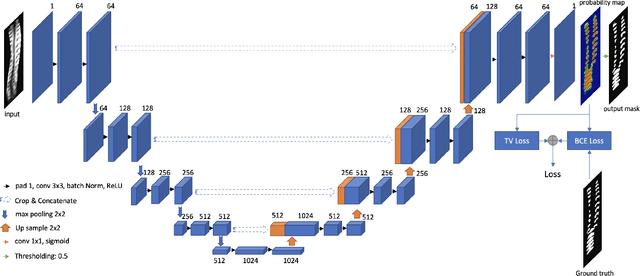
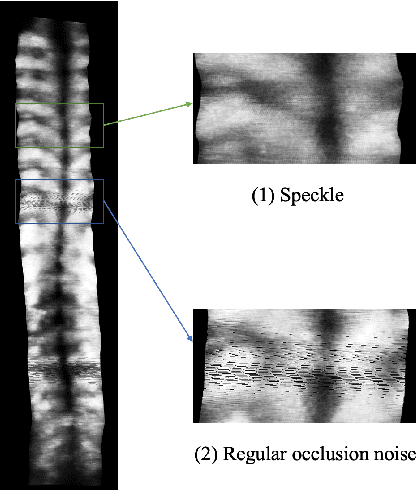
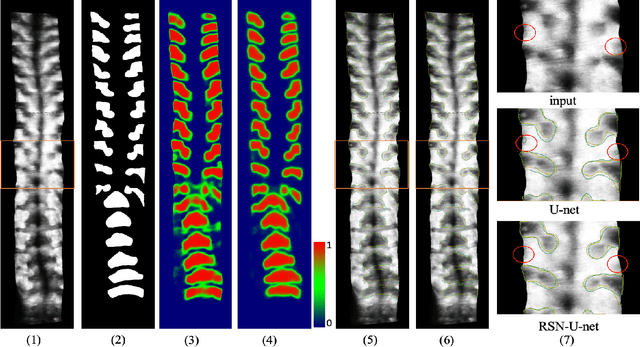
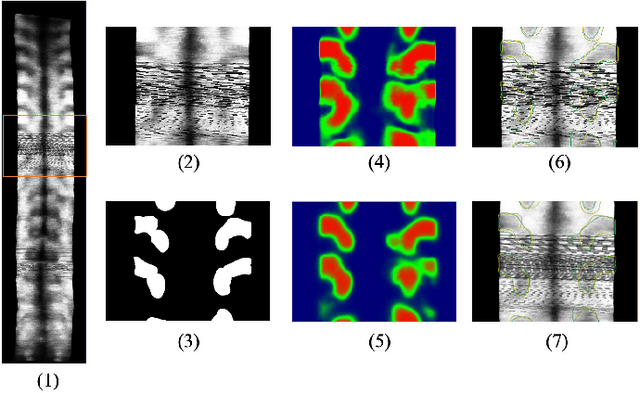
Abstract:3D ultrasound imaging shows great promise for scoliosis diagnosis thanks to its low-costing, radiation-free and real-time characteristics. The key to accessing scoliosis by ultrasound imaging is to accurately segment the bone area and measure the scoliosis degree based on the symmetry of the bone features. The ultrasound images tend to contain many speckles and regular occlusion noise which is difficult, tedious and time-consuming for experts to find out the bony feature. In this paper, we propose a robust bone feature segmentation method based on the U-net structure for ultrasound spine Volume Projection Imaging (VPI) images. The proposed segmentation method introduces a total variance loss to reduce the sensitivity of the model to small-scale and regular occlusion noise. The proposed approach improves 2.3% of Dice score and 1% of AUC score as compared with the u-net model and shows high robustness to speckle and regular occlusion noise.
Multi-level CNN for lung nodule classification with Gaussian Process assisted hyperparameter optimization
Jan 02, 2019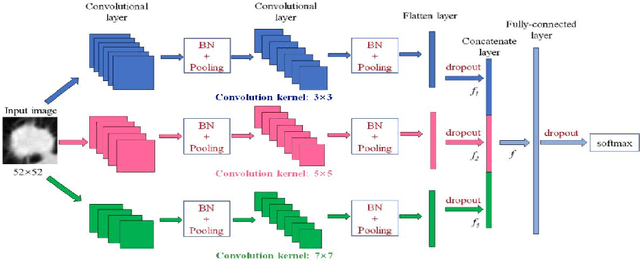


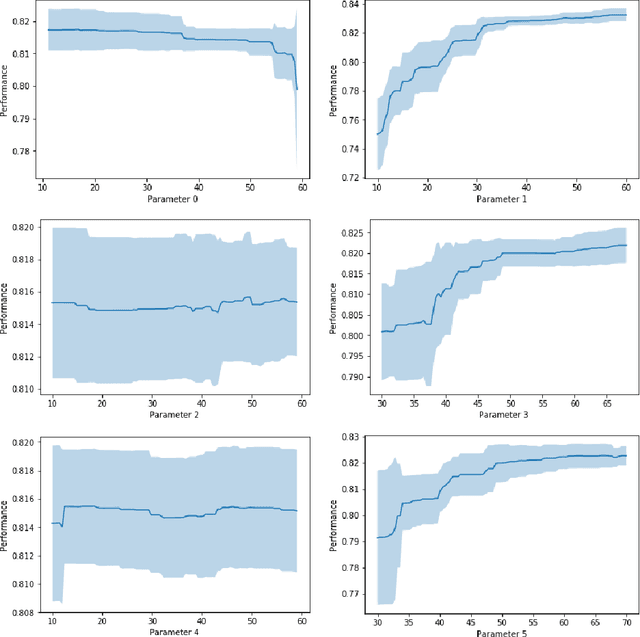
Abstract:This paper investigates lung nodule classification by using deep neural networks (DNNs). Hyperparameter optimization in DNNs is a computationally expensive problem, where evaluating a hyperparameter configuration may take several hours or even days. Bayesian optimization has been recently introduced for the automatically searching of optimal hyperparameter configurations of DNNs. It applies probabilistic surrogate models to approximate the validation error function of hyperparameter configurations, such as Gaussian processes, and reduce the computational complexity to a large extent. However, most existing surrogate models adopt stationary covariance functions to measure the difference between hyperparameter points based on spatial distance without considering its spatial locations. This distance-based assumption together with the condition of constant smoothness throughout the whole hyperparameter search space clearly violates the property that the points far away from optimal points usually get similarly poor performance even though each two of them have huge spatial distance between them. In this paper, a non-stationary kernel is proposed which allows the surrogate model to adapt to functions whose smoothness varies with the spatial location of inputs, and a multi-level convolutional neural network (ML-CNN) is built for lung nodule classification whose hyperparameter configuration is optimized by using the proposed non-stationary kernel based Gaussian surrogate model. Our algorithm searches the surrogate for optimal setting via hyperparameter importance based evolutionary strategy, and the experiments demonstrate our algorithm outperforms manual tuning and well-established hyperparameter optimization methods such as Random search, Gaussian processes with stationary kernels, and recently proposed Hyperparameter Optimization via RBF and Dynamic coordinate search.
 Add to Chrome
Add to Chrome Add to Firefox
Add to Firefox Add to Edge
Add to Edge